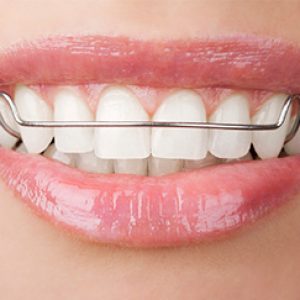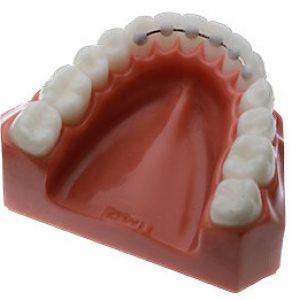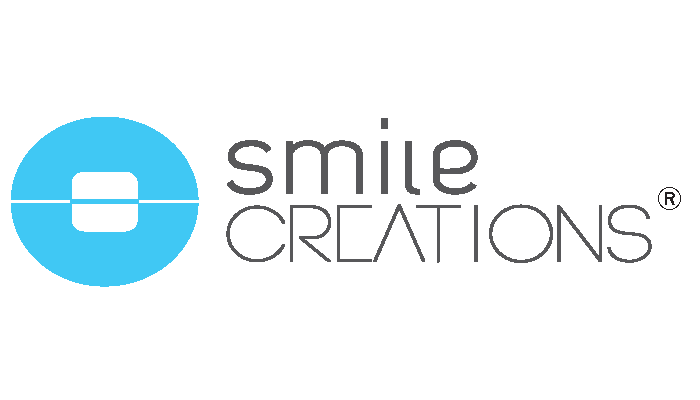Retainers are essential because it is your job to keep your teeth straight after orthodontic correction to straighten teeth and close spaces. Retainers allow bone to rebuild itself after your teeth have moved and keep your teeth straight. So wearing your retainers according to Dr. Steinberg’s suggestion upon the completion of your orthodontic treatment is the best way to make sure all of your hard work is not wasted!
Dr. Steinberg will recommend whether to get a fixed retainer (bonded), a removable retainer, or a combination of the two, and how long to wear them. Bone is a changing and growing material, and since your teeth sit in bone, they are subject to moving even after orthodontic treatment, unless you take the proper precautions to prevent this. Movement is most common in the lower front teeth. Tooth position will change naturally, and the best way to prevent this from altering your smile is to wear your retainers as prescribed.
There is no need to be alarmed if small changes occur, however, your teeth can shift significantly if you do not wear retainers as directed. Wisdom teeth, as well as many other factors of which you may not be aware, can cause other teeth to shift.
Retainers: the most important part of orthodontic treatment
Retainers are the single most important part of orthodontic treatment. Why? Because over time, teeth have a tendency to move. Think of it like muscle memory. Teeth know where they came from and have fibers around them that want to pull them back towards their starting position. They may not move overnight and they may not move all the way, but tooth movement is a guarantee. That’s why the retainers that follow braces are the most important part of anyone’s orthodontic treatment.
Different types of retainers
Different patients may benefit from different retainers and different providers may have different philosophies and tend to use more of one kind. Two main categories of retainers exist – removable and permanent (aka fixed). Removable retainers, by definition, are retainers that can be taken in and out of the mouth. The two main types are the clear Essix retainers, also known as vacuum-formed retainers, and the wire-based Hawley. Each one has its own pros and cons.
Removable retainers
Essix retainers are clear and therefore more esthetic. They can typically be made in the office and therefore have a shorter turn-around time to make and a lower cost since they don’t need to be sent out to a lab. They can be made in different thicknesses depending on patients’ needs or predispositions to grinding.
The Hawley or wire-based retainer is made of two materials: wire and acrylic. The wire is formed to fit around the teeth and is held together by the acrylic. It’s made by a lab technician and therefore is more costly. The Hawley does have some adjustability not offered by the Essix and in theory, could have a longer lifespan. Although, I’ve had my Essix retainers going on 15 years!
 Removable retainers are taken out for eating, brushing, and flossing. After a short period of full-time wear (length of time differs by the practice), nighttime wear is recommended for lifetime. Teeth have a tendency to move all throughout the course of our lifetime; without a retainer, this forward shift typically results in increased crowding of the lower front teeth. It’s not unusual for adults to notice their front teeth more crowded than several decades ago or to have patients with “perfect” teeth come in for a consultation later in life after noticing that their teeth aren’t like they used to be.
Removable retainers are taken out for eating, brushing, and flossing. After a short period of full-time wear (length of time differs by the practice), nighttime wear is recommended for lifetime. Teeth have a tendency to move all throughout the course of our lifetime; without a retainer, this forward shift typically results in increased crowding of the lower front teeth. It’s not unusual for adults to notice their front teeth more crowded than several decades ago or to have patients with “perfect” teeth come in for a consultation later in life after noticing that their teeth aren’t like they used to be.
Permanent retainers
Fixed or permanent retainers are pieces of wire that are glued to the backs of the front teeth. They typically don’t take the place of removable retainers since they don’t cover all the teeth. They can be used to ensure that a space doesn’t reopen or as an added security to help maintain tooth position. Two main disadvantages of permanent retainers are that they can be hard to clean under and around unless you’re very handy with floss and threaders. Second, the glue keeping the wire adhered to the tooth can break and overtime be costly to repair.
 No matter what retainers you end up with, wear them! They are much easier to wear than braces, and they are helping to maintain all the time, money, and effort that went into create your beautiful smile. That being said, if your retainers are ever lost, broken, or worn out, head to your nearest orthodontist for a new set as soon as possible to prevent unwanted tooth movement!
No matter what retainers you end up with, wear them! They are much easier to wear than braces, and they are helping to maintain all the time, money, and effort that went into create your beautiful smile. That being said, if your retainers are ever lost, broken, or worn out, head to your nearest orthodontist for a new set as soon as possible to prevent unwanted tooth movement!
